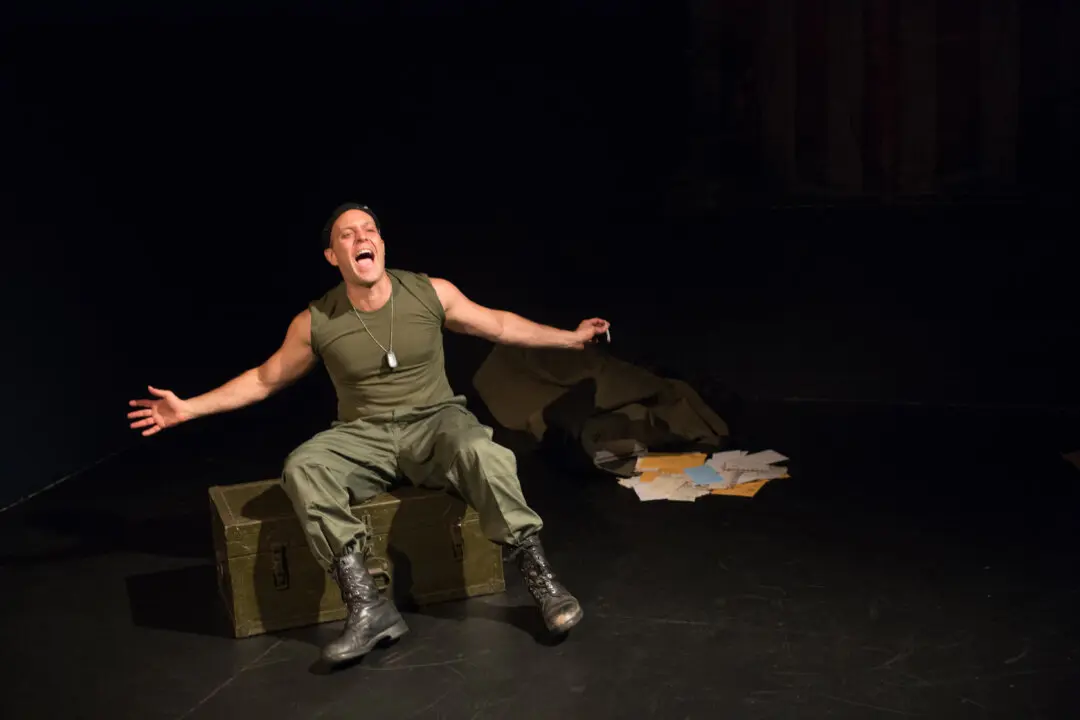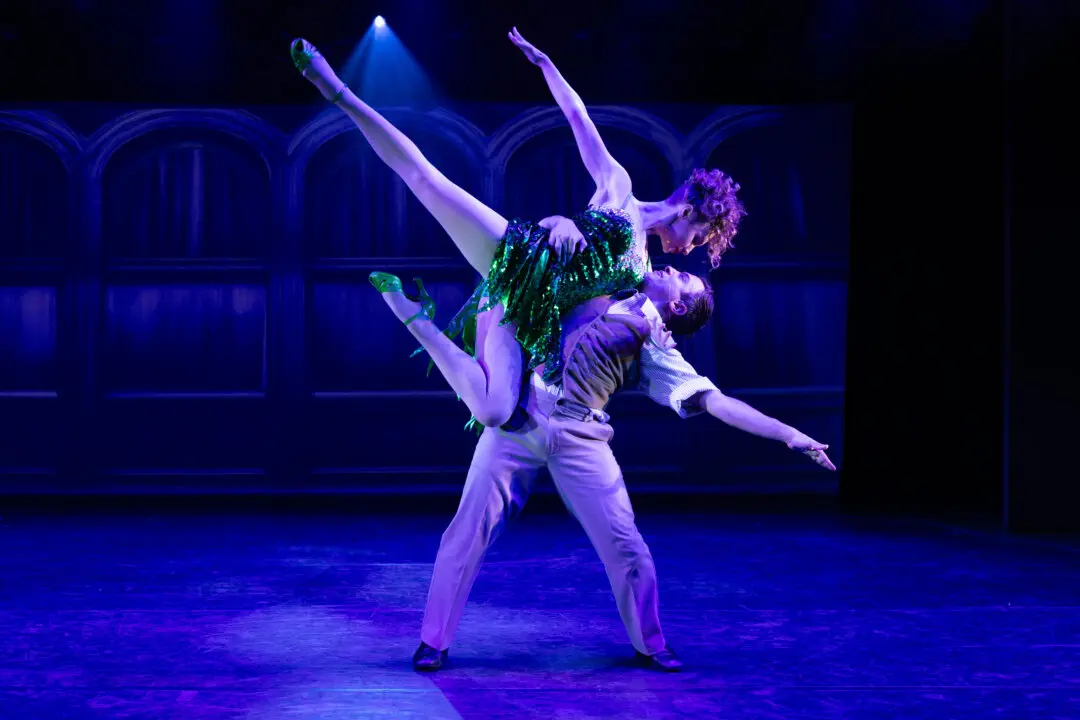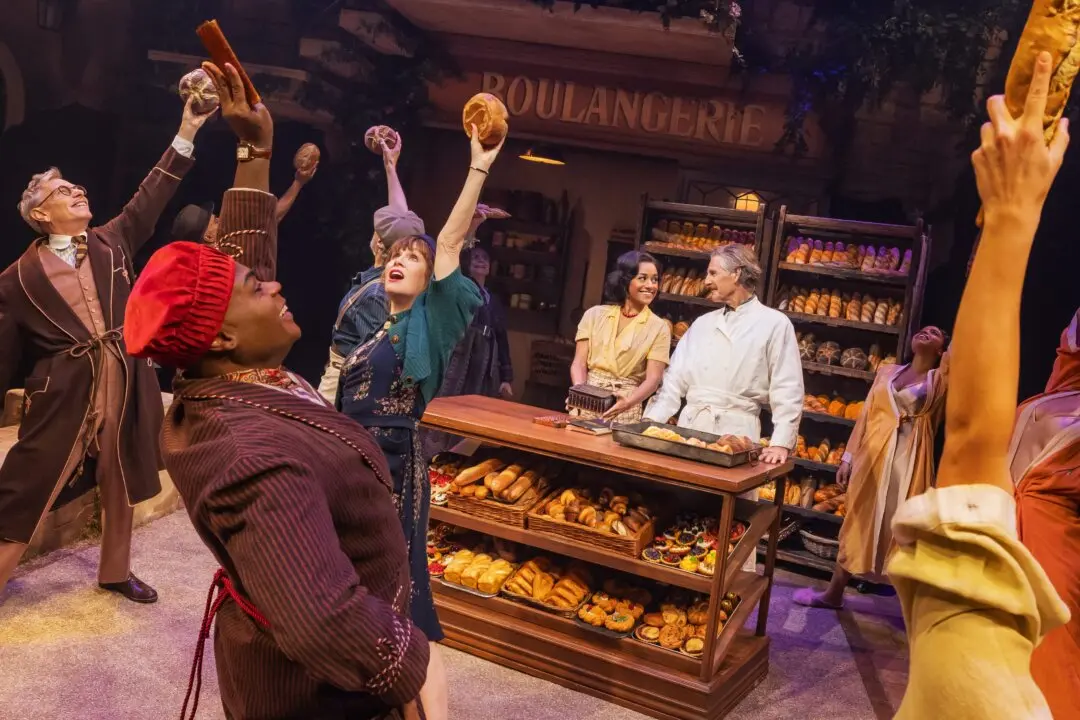NEW YORK—Offering what should hopefully become a holiday staple, the Irish Repertory Theatre presents a revival of its 2011 musical “The Streets of New York. ” The piece harkens back to the days of the melodrama with its absorbing take on social status and how far the human spirit can be tested. Adapted and directed by Charlotte Moore, the musical is based on an 1853 play by Dion Boucicault.
The story begins in 1837 when sea captain Patrick Fairweather (Daniel J. Maldonado) entrusts his fortune to Gideon Bloodgood (David Hess) the manager of a prominent New York bank. Unbeknownst to all, the institution is on the verge of ruin, thanks to Bloodgood’s mismanagement. Bloodgood was actually preparing to flee the country when Fairweather’s sudden death prompts him to seize the captain’s fortune and restore himself and the bank to solvency.




